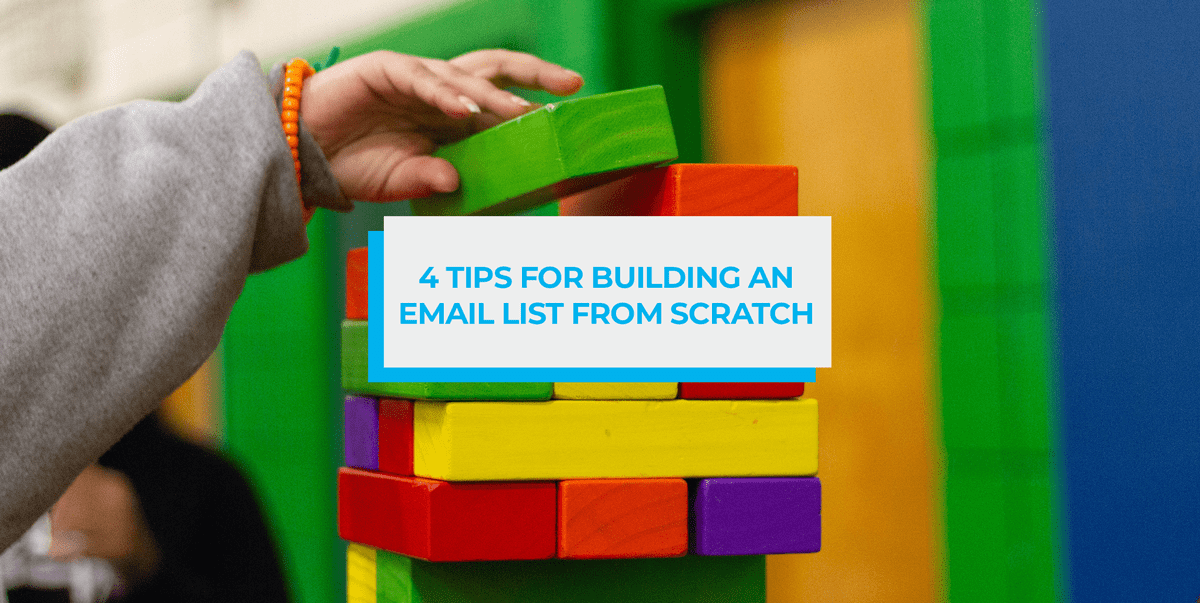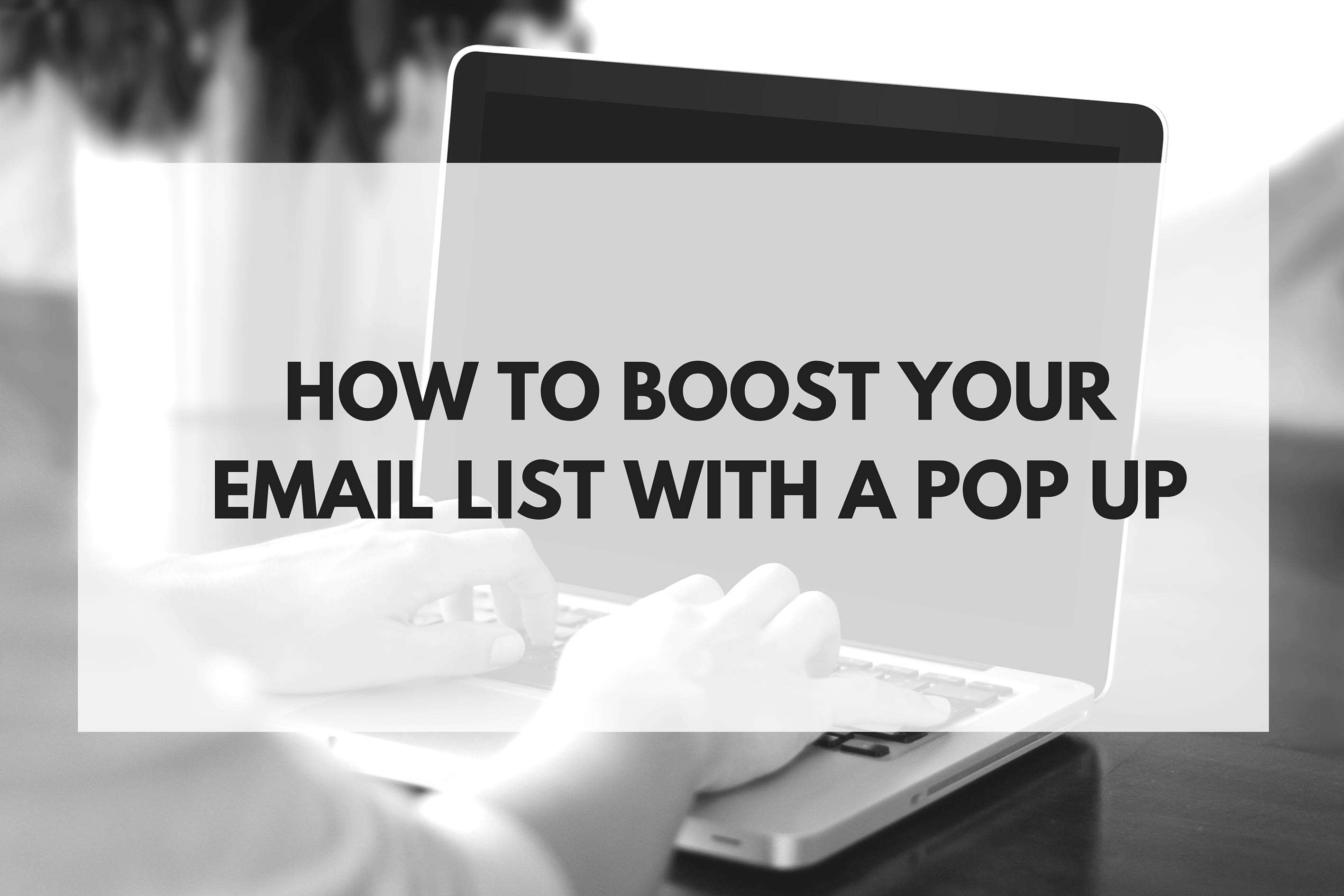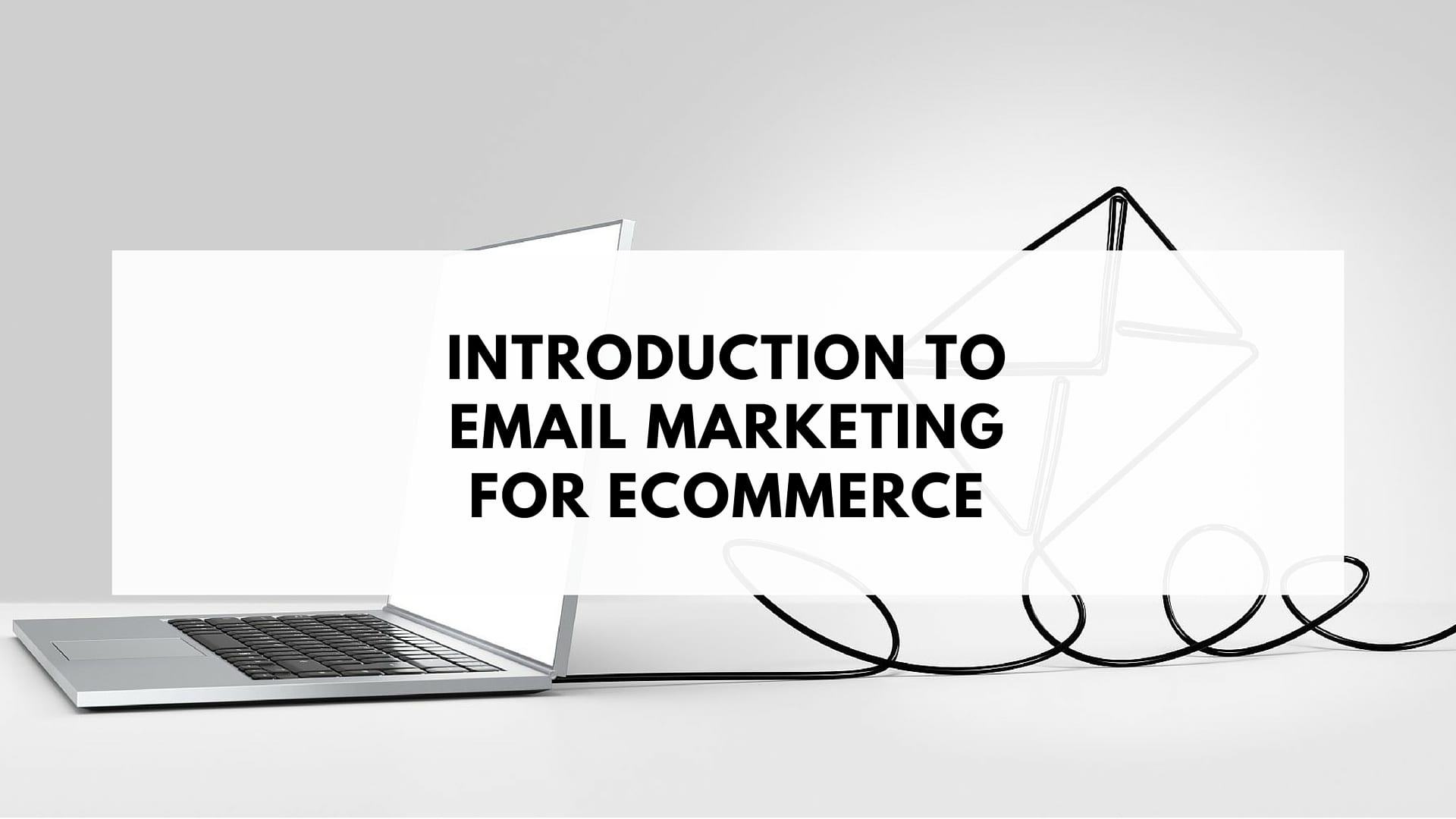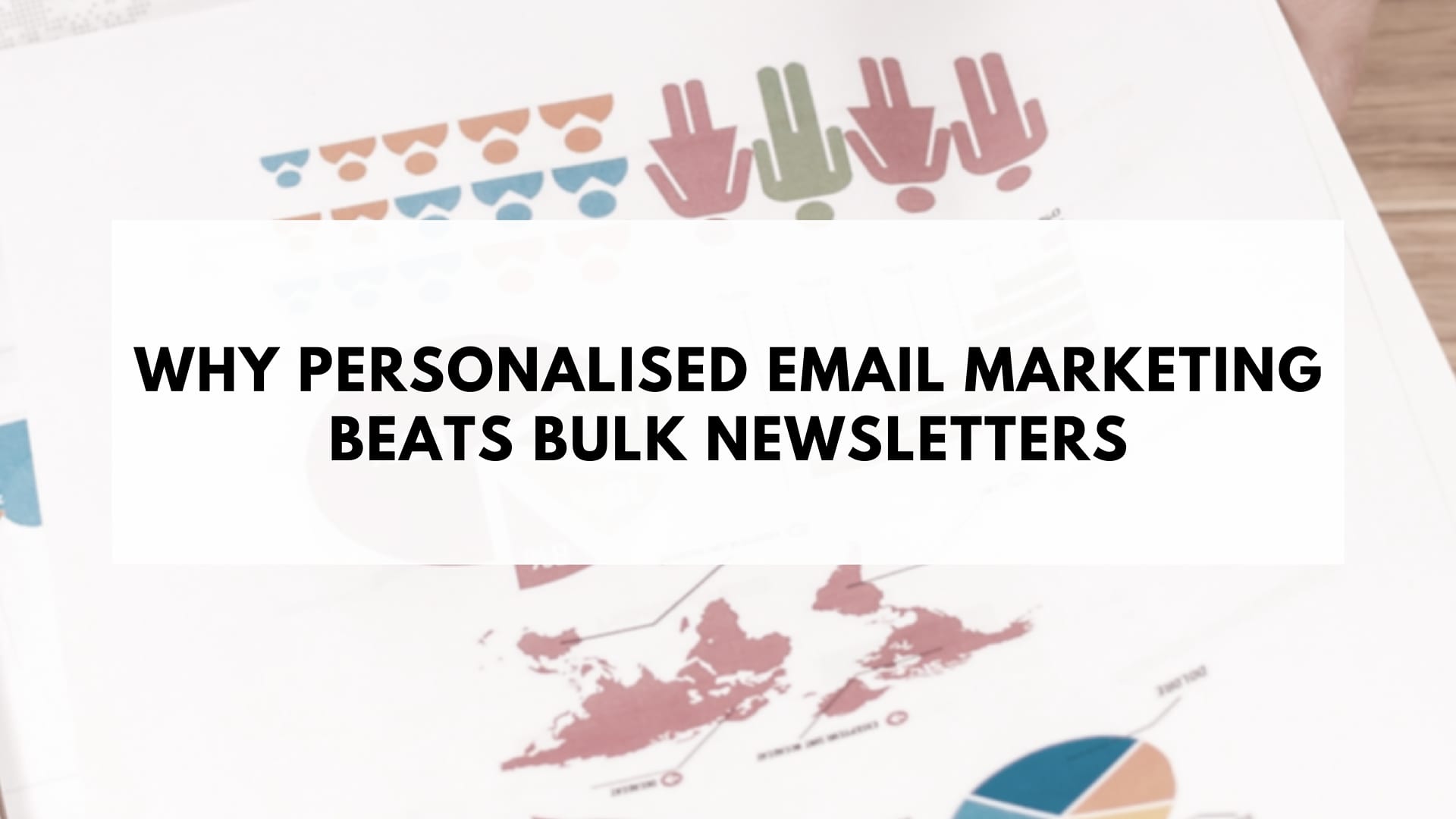Here are 4 Tips for Building an Email List from Scratch. Did you know that customers are much cheaper to keep than acquire?
It costs 5 times more to attract a new customer than to keep an existing one. Focusing on customer retention is a long-term solution to grow revenue and for sustainable growth. But it’s not always easy to cultivate that kind of loyalty.
So, how to keep your customers loyal to you?
Show them how you care about them.
We’re talking about approaching methods. Nowadays, social media is a gateway for e-commerce businesses to get closer to their audience. It’s so powerful in following customers and offering them our services.
But, let’s imagine one day, social media goes down simultaneously, so what?
Throwback to March 13th, 2019, Facebook, Instagram, and Whatsapp shut down across the world. Thankfully, those platforms were only shut down for a day, but we believe that day reminded a lot of business owners and content creators of the importance of having an email list.
One day, social media could easily shut down, and when that happens, you don’t have an email list. That means you will lose all contact with your customers, your followers, your clients, your audience, and so on.
In today’s post, we really want to show you step-by-step how you can go about building an email list from scratch. So you can protect yourself and your business in case social media doesn’t last forever and save lots of money.
#1. Have your lead magnets
The Number #1 way you can use to build an email list is actually creating an opt-in/a lead magnet/a freebie. These three words are interchangeable.
So, what is a lead magnet?
The main idea is that you’re giving away something for free in exchange for someone’s email.
Very much like real life. If a stranger came up to you and asked you for your email, or even your phone number, you probably wouldn’t give it to them. However, if that stranger went up to you and said: “Hey if you give me your email, I’ll give you a free gift”, you’d probably say “Yes”, won’t you?
So, keep that in mind when growing your email list. You want to make sure that your offer, your lead magnet, or your freebie is juicy enough for them to want to sign up for your email list.
Commonly used lead magnets
To help you out a bit and give you some inspiration, your lead magnet can be in the form of a PDF guide or a free video training, or it can also be in the form of a free audio file.
Regardless of what type of format you want your lead magnet to be in, you need to make sure that what you’re creating is actually what your audience wants. It needs to be a no-brainer freebie that your audience will absolutely want to download and will want to get in exchange for giving you their email.
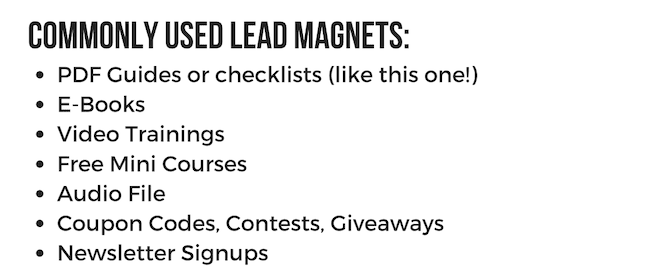
For example, HappyPoints focuses on Shopify development services, they give their audience a detailed guide on How to set up Shopify store on their blog. They even post an advanced guide talking about the elements that help boost the conversion rate.
Now, once you have created your freebie or your lead magnet, or your opt-in, or whatever you want to call it, the next thing you want to do is distribute your lead magnet.
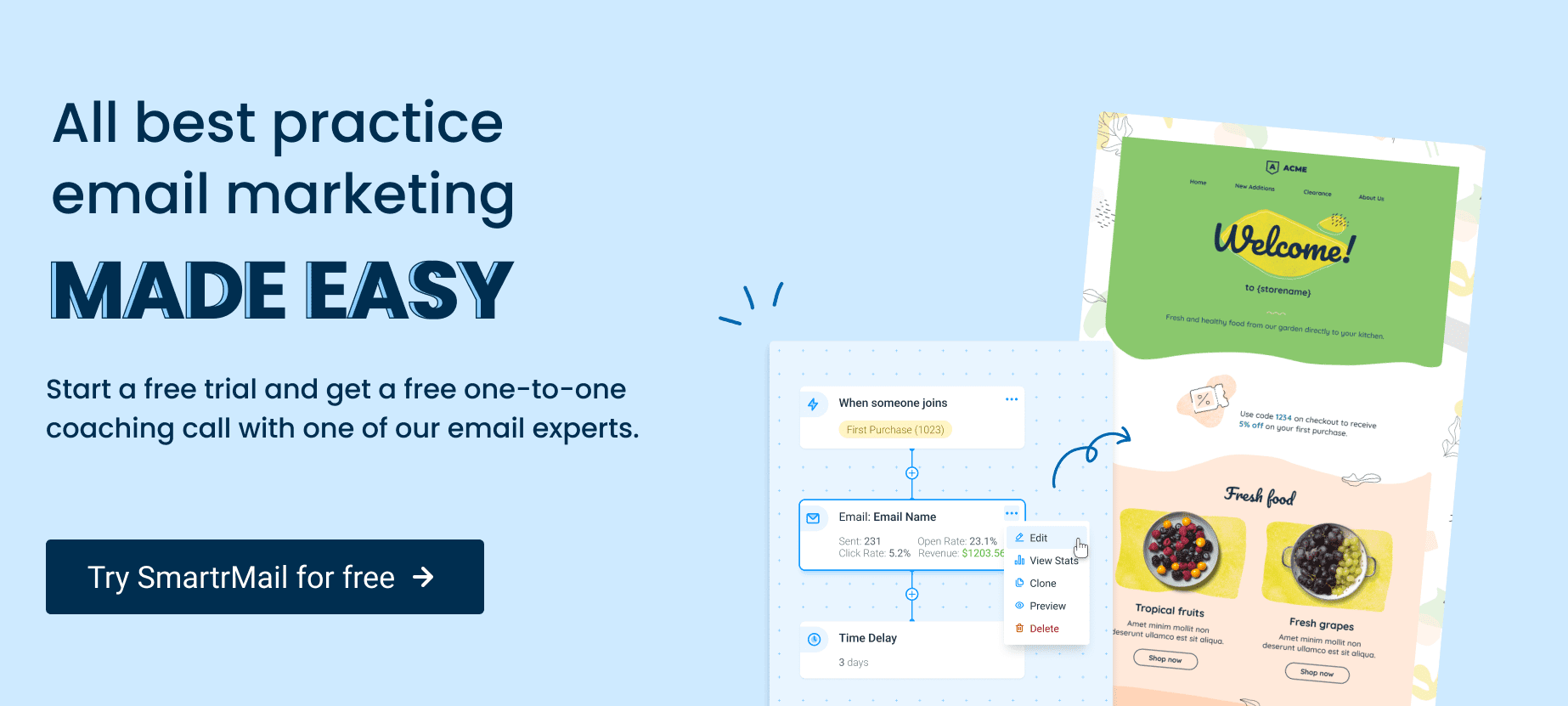
#2. Think about distribution
If you use your website as the main distribution platform, make sure to plug some of your lead magnets into blog posts if it’s relevant. Hubspot is doing this very well. Let’s have a look at their blog:
In their post on the best time to post on social media, they offer readers a free calendar template.
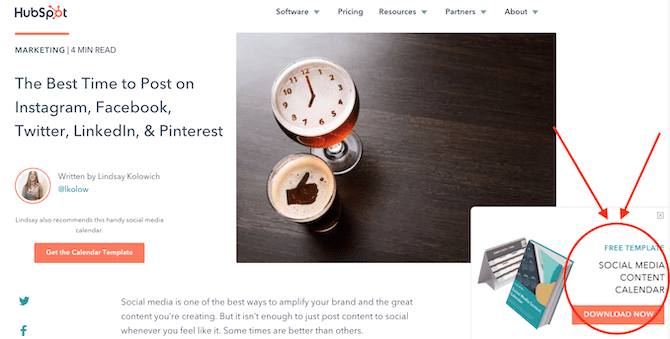
If you look at Hubspot’s blog posts, almost all of them are plugged with Free checklists, Free templates, Free guides, Free tips, and tricks… Almost all of their posts are saying things like “You can find more useful tips with our Free guide here”.
Each lead magnet is linked to a landing page with a sign up form for readers to fill in.
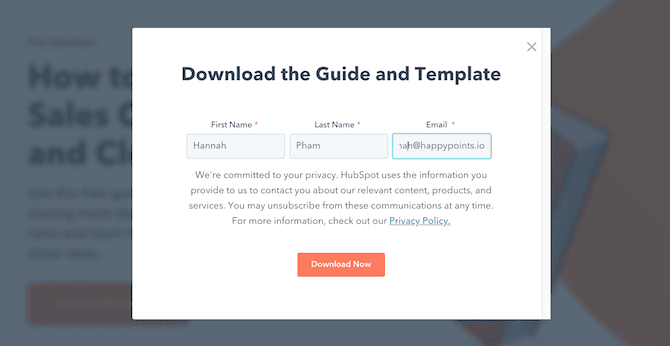
And this kind of goes back to our previous advice about making sure that your lead magnets or your freebies are absolutely relevant to your audience.
For example, it doesn’t make sense if we’re writing about email marketing strategy and suddenly we’re plugging a freebie about a coding checklist. It just doesn’t make sense, and that freebie/lead magnet will probably not perform that well.
Just keep in mind that your target audience should truly appreciate having that lead magnet.
If you’re not keen on producing long-form content, don’t worry! There are definitely other ways that you can grow your email list. For example, you can run Facebook Ads or put your lead magnet in a Facebook group. If you don’t know how much to spend on online advertising, just put your lead magnet just on your Facebook page, which doesn’t even have to be ads or groups.
If you choose YouTube as the main medium to spread your content, make it really prominent in the header section.
Last but not least, you can also put your lead magnet in the link in your bio section on Instagram!
Now, the next question you probably have is: “Okay, great, I’ve created my lead magnet, and I have an idea of where I want to distribute it. But how do I actually collect email addresses?”
Now, the first thing that you’ll absolutely need other than the lead magnet itself is actually:
Having a landing page.
So how do you create a landing page? Let’s move on!
#3. Create your landing page
To create a landing page, you can do it on WordPress, Squarespace, or Wix. Or you can use landing page software like LeadPages or Unbounce to do that.
If you want to take it a step further, you can also use ClickFunnels, Kartra, or Kajabi in order to create this.
Now, we’re going to leave it up to you to do the research, but just know that you need a landing page in order to collect the actual email addresses.
Because at the end of the day, you’re not giving away your freebie for absolutely free. You need that person to fill out a form with their name and email address to start sending emails to them.
After you’ve successfully started collecting email addresses, it brings us to the next step: You need email marketing software!
#4. Have email marketing software
If you really are only just starting out by building an email list from scratch, you’ll also need to choose an email service provider.
While there are plenty of different options out there depending on what you want to achieve with email marketing, SmartrMail has been built from the ground up with ecommerce merchants in mind.
What does this mean? In short, it means that SmartrMail has the following features:
Product recommendation emails
Your email marketing software should help you automatically suggest products for your customers after they’ve made a purchase in the past. It helps you with product recommendations, not randomly sending out irrelevant emails.
Sending irrelevant emails may force your subscribers to disregard your brand and then stop purchasing from you. SmartrMail is really good at leveraging personalization. It evaluates the past purchases of a particular customer, along with their browsing history and email clicks.
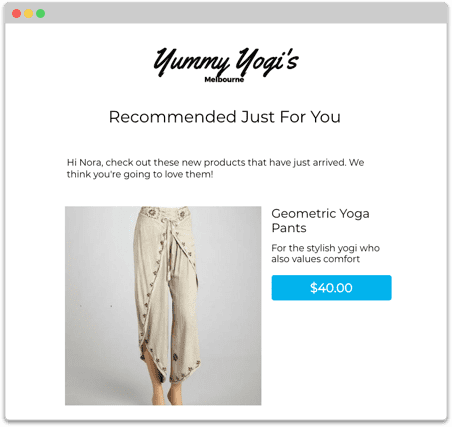
Abandoned cart recovery options
Abandoned cart emails are the ultimate tool to bring back customers. And with SmartrMail, you can send up to 3 follow-up emails when a customer abandons their cart.
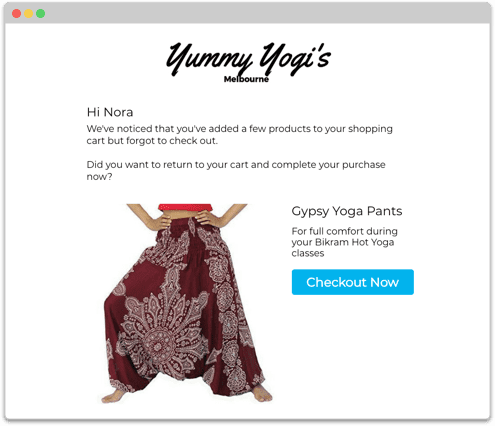
After that, you can look at the sales report to see which of the abandoned cart emails drove business to your site.
Faster email newsletter composer
As a merchant, having to upload product images and copy/paste descriptions can become very tedious very quickly.
SmartrMail’s email composer integrates with your store to shorten the entire process of composing an email newsletter. All you have to do is just select the products you want to insert into your newsletter. It means the description, links and price are all automatically dropped into the email.
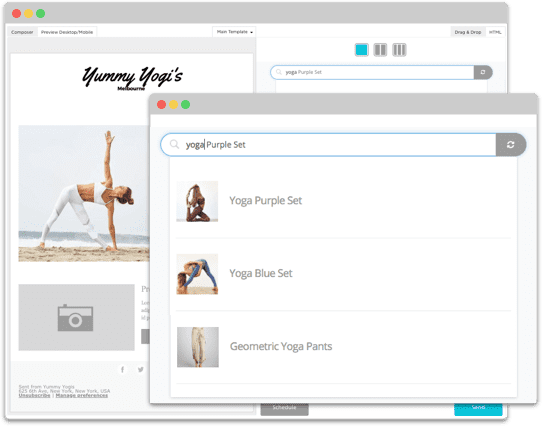
Additionally, SmartrMail also has a quick product lookup tool to help you find the perfect product to put into the email.
Conclusion
There are hundreds of tips and tricks to build an email list out there.
You might find a detailed guide that instructs you write compelling calls to action to push your customers to fill in and submit a form. But, there are 3 crucial elements you must take into account if you want to build a sizeable email list: a lead magnet, a landing page, and an email marketing software.
So, how are you going with building an email list from scratch? Let us know in the comments below!
Author Bio
Hannah started as a copywriter, but it turns out her true passion is e-commerce marketing.
She is naturally inquisitive about human behavior and its interaction with the digital world. Now, she’s part of the HappyPoints team with a goal to help Shopify merchants boost their business.
Her team helps merchants launch their e-commerce websites and optimize their sales conversions with fully managed Shopify store setup and theme customizations.

